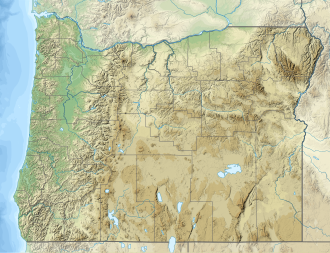| Mount Scott | |
|---|---|
 Mount Scott viewed from the southwest | |
| Highest point | |
| Elevation | 8,934 ft (2,723 m) [1] |
| Prominence | 3,009 ft (917 m) [2] |
| Listing | |
| Coordinates | 42°55′22″N122°00′59″W / 42.92287085°N 122.016268694°W [1] |
| Geography | |
Klamath County, Oregon, U.S. | |
| Region(s) | Oregon, United States |
| Parent range | Cascades |
| Topo map | USGS Crater Lake East |
| Geology | |
| Rock age | About 420,000 years [3] |
| Mountain type | Stratovolcano |
| Volcanic arc | Cascade Volcanic Arc |
| Last eruption | 420,000 years ago |
Mount Scott is a small stratovolcano and a so-called parasitic cone on the southeast flank of Crater Lake in southern Oregon. [4] [5] It is approximately 420,000 years old. [3] Its summit is the highest point within Crater Lake National Park, and the tenth highest peak in the Oregon Cascades. [6] A small fire lookout tower stands on the summit, at the end of a trail that zigzags approximately 1,500 feet (460 m) up the mountain. The mountain is named for Oregon pioneer Levi Scott, founder of Scottsburg, Oregon. [7]

